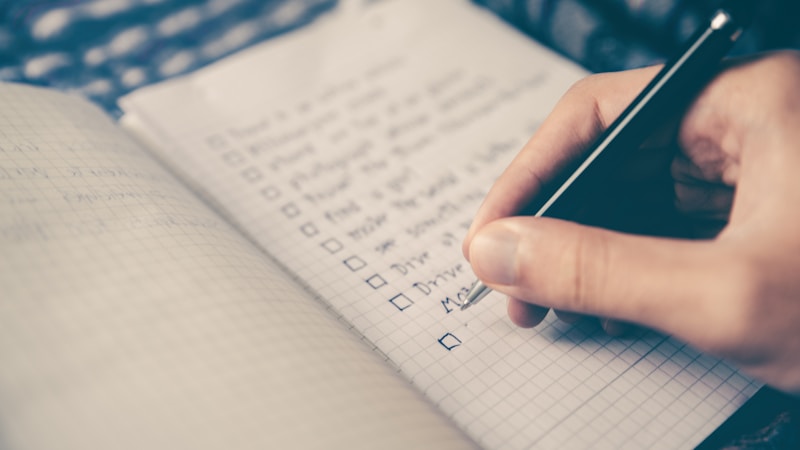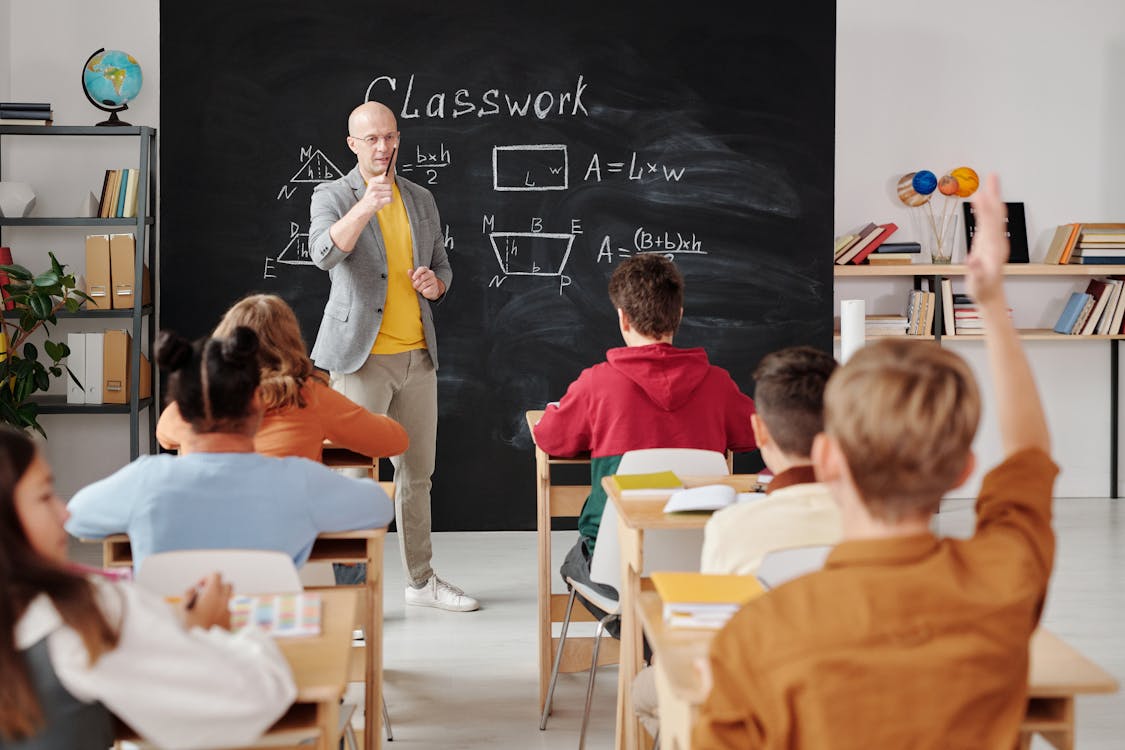
The way students capture, organize, and review information has undergone a dramatic transformation in recent years. While traditional pen-and-paper note-taking served generations of learners effectively, today's digital tools offer capabilities that fundamentally enhance how we process and retain information. Yet many students struggle to bridge the gap between proven note-taking methodologies and modern technology, either abandoning effective systems when going digital or failing to leverage technology's unique advantages. The solution isn't choosing between traditional methods and digital tools—it's understanding how to integrate time-tested strategies like the Cornell Method with contemporary digital platforms to create a note-taking system that's both pedagogically sound and technologically optimized.
The Cornell Note-Taking System, developed at Cornell University in the 1950s, remains one of the most effective structured approaches to capturing and reviewing information. Its brilliance lies not in complexity but in a simple three-section layout that facilitates active learning, organization, and review. When thoughtfully adapted to digital platforms, the Cornell Method's strengths amplify exponentially, combining its cognitive benefits with technology's searchability, multimedia integration, and accessibility across devices. Understanding how to implement this fusion creates a powerful learning system that serves students from middle school through graduate education and beyond.
Understanding the Cornell Method: Why It Works
Before exploring digital implementations, it's essential to understand what makes the Cornell Method effective from a learning science perspective. The system divides each page into three distinct sections: a narrow left column for cues and questions, a wider right column for notes taken during lectures or reading, and a summary section at the bottom. This structure isn't arbitrary—it reflects how memory consolidation and retrieval actually work.
According to research on effective note-taking strategies, the Cornell Method's power emerges from how it scaffolds the learning process across multiple stages. During initial exposure to material, you capture information in the notes column, engaging with content actively rather than passively listening or reading. This encoding process—the act of selecting, organizing, and recording information—creates initial memory traces that simple highlighting or re-reading cannot achieve.
The cue column transforms notes from passive records into active learning tools. After class or a reading session, you review your notes and generate questions, keywords, or cues that would prompt recall of the detailed information in the notes column. This second pass requires you to process information more deeply, identifying key concepts and relationships rather than treating all information as equally important. The act of generating questions activates metacognitive processes—thinking about your thinking—that enhance understanding and retention.
The summary section at the bottom forces synthesis and integration. Condensing an entire lecture or chapter into a few sentences requires identifying central themes, distinguishing essential information from supporting details, and expressing concepts in your own words. This generative process—creating something new from the material rather than simply reorganizing existing text—produces stronger and more flexible knowledge that transfers better to new situations like exams or applications.
Digital Advantages: Beyond Paper's Limitations
While the Cornell Method works excellently on paper, digital implementation unlocks capabilities that paper simply cannot provide. Understanding these advantages helps you leverage technology strategically rather than merely replicating paper processes on screens.
Search functionality transforms how you access information. With paper notes, finding specific information requires manually flipping through pages, scanning visually for relevant content—a time-consuming process that often fails when you can't remember exactly where or when something was covered. Digital notes are instantly searchable, allowing you to locate any keyword, concept, or topic across all your notes in seconds. This searchability doesn't just save time—it fundamentally changes how you can use notes as an external memory system you can query efficiently.
Multimedia integration represents another transformative capability. Paper notes limit you to text and hand-drawn diagrams, but digital Cornell notes can incorporate screenshots, audio recordings, video clips, web links, and interactive elements. A chemistry student can embed molecular structure animations directly into notes. A history student can link to primary source documents or documentary clips. A language learner can attach audio pronunciation files to vocabulary notes. This multimedia richness creates more comprehensive and engaging study materials that accommodate different learning preferences.
Cloud synchronization means your notes exist everywhere you are. Whether you're studying on your laptop at home, reviewing on your tablet during a commute, or quickly checking something on your phone between classes, your complete note repository remains accessible. This ubiquity eliminates the problem of leaving notebooks at home or losing critical information, while enabling study sessions to happen whenever you have a few spare minutes rather than only when you have physical access to paper notes.
Version control and editing flexibility allow continuous refinement without creating messy, crossed-out pages. You can update, reorganize, and enhance notes as your understanding deepens, maintaining clean, professional-looking materials throughout the semester. Digital formats also enable easy sharing with study groups, submission to instructors who require notes as part of coursework, and archiving of materials you might reference in future courses or professional work.
Digital Tools for Cornell Note-Taking
Numerous digital platforms support Cornell Method implementation, each with distinct strengths and trade-offs. Selecting the right tool depends on your specific needs, devices, budget, and comfort with technology. Understanding the landscape helps you make informed choices rather than defaulting to whatever app friends happen to use.
Note-taking apps with Cornell templates or formatting capabilities include OneNote, which offers flexible canvas-style note-taking with section dividers that can replicate Cornell structure. Its integration with Microsoft Office ecosystem appeals to students already using Word and PowerPoint. Notion provides highly customizable database and page layouts that can beautifully implement Cornell format with additional organizational features like linking between notes and creating knowledge bases. Evernote, though less flexible than Notion, offers reliable cross-platform synchronization and powerful search capabilities with straightforward Cornell templates.
Dedicated Cornell note-taking apps like Cornell Notes App, Cornell Note Paper, and various Cornell-specific applications provide purpose-built interfaces that enforce the three-section structure automatically. These specialized tools reduce setup time and ensure consistency across all notes, though they often lack the advanced features of general-purpose platforms. For students who want simplicity and don't need extensive customization, dedicated Cornell apps provide turnkey solutions.
Handwriting-capable apps like GoodNotes, Notability, and OneNote (with stylus support) bridge paper and digital worlds. Students who prefer handwriting but want digital advantages can draw Cornell layouts and write freehand while benefiting from searchability (through handwriting recognition), cloud sync, and multimedia embedding. These apps particularly appeal to STEM students who need to draw complex diagrams, write mathematical equations, or sketch scientific illustrations that keyboard entry would make cumbersome.
Even general document processors like Google Docs or Microsoft Word can implement Cornell systems through tables or custom templates. While lacking specialized features of dedicated note-taking platforms, these ubiquitous tools offer familiarity and compatibility advantages. Students can create Cornell templates once and reuse them across all courses, with the added benefit that professors and study partners will likely have compatible software for sharing and collaboration.
Implementing Digital Cornell: Best Practices
Successfully transitioning to digital Cornell notes requires more than just choosing software—it demands thoughtful implementation strategies that preserve the method's learning benefits while leveraging digital capabilities. Students who simply replicate paper processes digitally often find the experience unsatisfying and revert to traditional methods, missing opportunities for enhancement.
Create consistent templates that maintain the Cornell three-section structure across all notes. Consistency reduces cognitive load during note-taking sessions when you should focus on content rather than formatting. Most platforms allow saving custom templates or using pre-made Cornell layouts that ensure every new note page automatically includes the cue column, notes column, and summary section in proper proportions. Investing time upfront to create effective templates pays dividends throughout the semester.
Develop systematic naming and organization schemes that make notes easily findable. Date-based naming (YYYY-MM-DD format), course codes, and topic keywords help identify notes at a glance. Folder hierarchies organized by semester, course, and major topics provide logical structure. Tags or labels add another organizational layer, allowing you to mark notes by theme across different courses—particularly valuable when preparing comprehensive exams or synthesizing knowledge from multiple classes.
Key digital Cornell implementation strategies include:
- Use keyboard shortcuts to maximize efficiency—learn your platform's quick commands for formatting, navigation, and common actions
- Leverage voice-to-text during lectures when typing disrupts focus, but immediately review and edit for accuracy
- Embed links to readings, lecture recordings, or relevant resources directly in notes rather than just citing sources
- Use different colors strategically to highlight key concepts, distinguish between cue types, or mark areas needing further review
- Set regular review schedules in calendar apps that prompt revisiting notes for cue generation and summary writing
- Create interlinked notes where concepts from different lectures or readings connect, building comprehensive knowledge networks
- Back up notes regularly to multiple locations—cloud services fail occasionally, and redundancy protects against data loss
According to research on effective study techniques, the most important implementation principle is maintaining the Cornell Method's fundamental active learning processes regardless of medium. Technology should enhance, not replace, the cognitive engagement of generating cues, writing summaries, and regularly reviewing materials. Students who focus excessively on digital features while neglecting these core practices gain little benefit from the transition.
The Cue Column in Digital Format: Enhanced Possibilities
The Cornell Method's cue column gains particular power in digital implementations. While paper cue columns contain static keywords and questions, digital versions can transform into dynamic learning tools with interactive capabilities that amplify the method's effectiveness.
One powerful digital enhancement involves turning cue column entries into clickable links that expand to reveal detailed notes, then collapse back to cue-only view. This functionality mimics flashcard systems while maintaining the context of full notes. You can test yourself by reviewing only cues, attempting to recall associated information, then clicking to verify accuracy and review details. This built-in testing capability supports retrieval practice—one of the most effective learning strategies—without requiring separate flashcard creation.
Digital cue columns can also incorporate spaced repetition algorithms if you're using platforms that support such features. Rather than manually scheduling review sessions, the system can automatically prompt you to revisit specific cue items at optimal intervals based on how well you've demonstrated mastery. This algorithmic approach to review scheduling optimizes learning efficiency by focusing attention where it's most needed while reducing time spent on already-mastered material.
Adding hyperlinks in the cue column creates navigation pathways through your notes. A cue about "cellular respiration" might link not just to notes in that section but also to related notes about ATP synthesis from biochemistry, mitochondrial function from cell biology, and metabolic disorders from pathophysiology. These cross-references build integrated knowledge networks that mirror how concepts actually relate across disciplines, supporting deeper understanding than isolated topic notes can achieve.
The Summary Section: Digital Enhancement Strategies
The summary section at the bottom of Cornell notes serves critical learning functions that digital implementation can significantly enhance. While paper summaries remain static once written, digital summaries can evolve, expand, and connect to broader knowledge systems in ways that amplify their learning value.
One effective digital strategy involves creating progressive summaries that you update as understanding deepens. After an initial lecture, you might write a brief summary capturing main points as you currently understand them. Following related readings or subsequent lectures that build on the topic, you can expand or revise that summary to reflect more sophisticated understanding. This iterative refinement mirrors how actual learning happens—through repeated exposure and deepening comprehension—rather than treating notes as finished products after one pass.
Digital platforms enable linking summary sections across related notes to create meta-summaries that synthesize themes spanning multiple lectures or chapters. A weekly summary note might pull together key points from several daily lecture notes, identifying connections and overarching patterns. A unit review note might synthesize multiple weekly summaries into comprehensive understanding of major course sections. These layered summaries create hierarchical knowledge structures that support both detailed recall and big-picture understanding.
The summary section also provides an ideal location for metacognitive reflection that enhances learning. Beyond summarizing content, you can add brief reflections about what you found confusing, what surprised you, how new information connects to prior knowledge, or what questions remain. This metacognitive layer helps you monitor your own understanding and identify areas requiring additional attention—a self-regulated learning practice that distinguishes expert learners from novices.
Comparing Digital Cornell to Other Digital Note-Taking Methods
While digital Cornell notes offer substantial advantages, they represent one approach among several effective digital note-taking systems. Understanding how Cornell compares to alternatives helps you make informed choices about when Cornell serves best and when other methods might be more appropriate.
Linear note-taking—simply typing continuous notes as information is presented—offers simplicity and speed but lacks Cornell's built-in organization and review structure. Students often find linear notes become passive records they never review effectively, whereas Cornell's cue and summary sections force active engagement. However, linear notes work well for lectures or readings where information flows in clear sequences without need for extensive reorganization.
Mind mapping creates visual, non-linear representations of information with main concepts at the center and related ideas branching outward. Digital mind mapping tools offer beautiful visualizations and reveal relationships Cornell's linear structure obscures. However, mind maps can become unwieldy with large amounts of information and don't support the systematic review processes Cornell facilitates. Some students successfully combine approaches, creating mind map summaries from Cornell notes to visualize relationships after capturing details through Cornell structure.
Outline-based note-taking organizes information hierarchically with main topics and subordinate subtopics. Digital outlining benefits from collapsible sections that let you focus on specific levels of detail. Outlines excel at capturing hierarchical information but lack Cornell's explicit review mechanisms. Students can combine outlining within Cornell's notes column, then generate cues and summaries that transform the outline into active learning material.
The optimal approach often involves flexibility—using Cornell as a default but adapting to content types and learning objectives. A lecture presenting sequential historical events might suit linear notes with Cornell structure. A concept-heavy philosophy discussion might benefit from mind mapping. A taxonomy-focused biology lecture might work well with outlining. Digital tools' flexibility allows switching between methods based on what serves learning best for specific content.
Overcoming Digital Distractions During Note-Taking
One legitimate concern about digital note-taking involves the distraction potential of internet-connected devices. The same laptop or tablet used for Cornell notes also offers access to social media, messaging, entertainment, and countless other attention magnets. Successfully implementing digital Cornell requires strategies for maintaining focus despite these distractions.
Distraction management begins with honest acknowledgment that willpower alone often fails. If you struggle to resist checking social media, relying purely on self-control during lectures or study sessions sets you up for failure. Instead, implement systematic barriers that make distractions difficult to access. Dedicated note-taking apps with full-screen modes eliminate visual distractions from other applications. Website blockers and app limiters can temporarily disable access to distracting sites during scheduled class or study times.
Physical positioning strategies also help. Sitting toward the front of class rooms increases social accountability—you're less likely to scroll through social media when professors and motivated classmates can see your screen. During independent study, facing walls rather than busy areas reduces visual distractions while keeping devices angled where you can monitor your own behavior helps maintain awareness of attention drift.
Some students benefit from hybrid approaches that separate capture from processing. Take quick, minimal notes by hand during lectures when distraction risk is highest, then transfer to digital Cornell format during dedicated review sessions when you can better control your environment and attention. This approach loses some digital advantages during initial capture but ensures you're actually engaging with lectures rather than pretending to take notes while half-attention scrolls elsewhere.
Conclusion: The Best of Both Worlds
The integration of Cornell Method with digital tools represents more than simply modernizing a traditional technique—it creates a note-taking system that leverages cognitive science principles while harnessing technology's unique capabilities. When implemented thoughtfully, digital Cornell notes provide the structured learning framework that makes Cornell effective while adding searchability, multimedia integration, cross-device accessibility, and collaborative possibilities that paper cannot match.
Success requires more than downloading an app and creating digital templates. It demands understanding why Cornell works from a learning perspective, then implementing digital features in ways that amplify rather than distract from those core benefits. The three-section structure, the practice of generating cues and summaries, the regular review process—these remain central regardless of medium. Technology should enhance your engagement with these proven practices, not replace them with superficial features that look impressive but don't drive learning.
For students willing to invest time learning digital tools and developing effective implementation strategies, the payoff can be substantial. Digital Cornell notes become not just records of information but dynamic learning systems that support understanding, retention, and application across courses and years. The notes you take today remain searchable and useful when writing papers next semester, studying for comprehensive exams next year, or even preparing for professional certifications after graduation. This long-term value, combined with immediate learning benefits, makes digital Cornell implementation well worth the effort required to master the approach.
As you consider whether and how to implement digital Cornell notes, start small rather than attempting wholesale change overnight. Choose one course to experiment with, select a platform that matches your devices and preferences, create templates, and commit to the full process including cue generation and summary writing. After several weeks, honestly assess whether the approach serves your learning better than your current methods. For many students, the answer will be yes—digital Cornell offers the best of both worlds, combining time-tested learning science with modern technology's power to transform how we capture, organize, and use information throughout our educational journeys and beyond.
Follow Us: For more updates, stories, and partner links — visit our official Facebook Page and explore Our Sister Sites.












